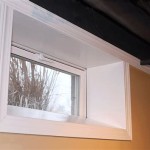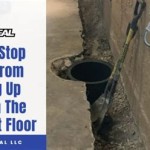Putting Carpet On Concrete Basement Floor: A Comprehensive Guide
Installing carpet on a concrete basement floor can significantly improve the comfort and usability of the space. Concrete, while structurally sound, is typically cold, hard, and prone to moisture issues. Carpet offers warmth, sound dampening, and aesthetic appeal, transforming a basement into a more inviting living area. However, successful carpet installation requires careful planning and execution to prevent problems such as mold growth and premature wear.
The process involves several key steps, from assessing the concrete slab and addressing moisture concerns to selecting the appropriate carpet and installation method. Ignoring these steps can lead to costly repairs and health problems down the line. This article provides a detailed guide to putting carpet on a concrete basement floor, outlining the necessary considerations and best practices for a long-lasting and comfortable result.
Addressing Moisture Issues in Concrete Basements
Concrete is porous and can absorb moisture from the surrounding soil. This moisture can then wick up through the slab and become trapped under the carpet, creating a breeding ground for mold and mildew. Before installing any flooring, it is crucial to assess the moisture levels in the concrete and take steps to mitigate any potential problems.
A simple moisture test can be performed using a plastic sheet and duct tape. Tape a square of clear plastic sheeting (approximately 18x18 inches) to the concrete floor in several different locations, including areas near walls and potential problem spots. Ensure the edges are sealed tightly with duct tape. Leave the plastic in place for 24-72 hours. After this period, check for condensation under the plastic or darkening of the concrete. If moisture is present, further investigation is needed to determine the source and extent of the problem.
Several options exist for addressing moisture issues. One method involves applying a concrete sealer designed to block moisture penetration. These sealers are typically epoxy-based or silicate-based and are applied directly to the clean concrete surface. It is essential to follow the manufacturer's instructions carefully, including proper surface preparation and application techniques. Multiple coats may be required for adequate protection.
Another option is to install a subfloor system that provides a barrier between the concrete and the carpet. These systems often consist of interlocking plastic tiles or dimpled membranes that create an air gap, allowing moisture to evaporate. The air gap also improves insulation, further reducing the coldness of the concrete floor. When choosing a subfloor system, consider the thickness and material composition to ensure it can withstand the expected foot traffic and weight. Some subfloor systems are specifically designed for use with carpet, while others can accommodate various types of flooring.
Dehumidifiers can also play a crucial role in maintaining a dry basement environment. Running a dehumidifier regularly can help remove excess moisture from the air, preventing condensation and mold growth. The size and capacity of the dehumidifier should be appropriate for the size of the basement. It is also important to ensure proper ventilation in the basement to further reduce moisture levels.
In cases of severe moisture problems, professional assistance may be required. A qualified waterproofing contractor can diagnose the underlying cause of the moisture intrusion and recommend appropriate solutions, such as exterior waterproofing or drainage improvements. Addressing these issues at the source is essential for ensuring the long-term success of the carpet installation.
Selecting the Right Carpet and Padding for a Basement
Choosing the right carpet and padding is critical for achieving the desired comfort, durability, and moisture resistance in a basement setting. Not all carpets are created equal, and some are better suited for the challenging environment of a concrete basement floor.
Synthetic fibers are generally preferred over natural fibers such as wool in basements due to their superior resistance to moisture and mold. Nylon, polypropylene (olefin), and polyester are common synthetic carpet fibers that offer good durability, stain resistance, and affordability. Nylon is known for its excellent resilience and abrasion resistance, making it a good choice for high-traffic areas. Polypropylene is highly stain-resistant and water-resistant, making it a popular option for basements prone to moisture. Polyester is a budget-friendly option that offers good stain resistance but may not be as durable as nylon or polypropylene.
The carpet's construction also plays a role in its performance in a basement. Loop pile carpets, such as Berber, are generally more resistant to crushing and matting than cut pile carpets, making them a good choice for high-traffic areas. However, loop pile carpets can be more difficult to clean and may not be as comfortable underfoot as cut pile carpets. Cut pile carpets, such as plush and frieze, offer a softer feel and can be easier to clean, but they may be more susceptible to crushing and staining.
In addition to the carpet itself, the padding beneath the carpet is equally important. The padding provides cushioning, absorbs impact, and helps to extend the life of the carpet. For basements, it is essential to choose a padding that is moisture-resistant and antimicrobial. Closed-cell foam padding is a good option as it does not absorb water and resists mold and mildew growth. Rubber padding is another durable and water-resistant option. Avoid using felt padding in basements, as it can absorb moisture and promote mold growth.
The thickness and density of the padding will affect the comfort and durability of the carpet. A thicker padding will provide more cushioning, but it may also make the carpet feel unstable. A denser padding will provide better support and prevent the carpet from crushing under heavy foot traffic. It is important to choose a padding that is appropriate for the type of carpet and the expected use of the space.
Consider low-VOC (volatile organic compounds) carpet and padding to minimize off-gassing and improve indoor air quality. These products emit fewer harmful chemicals, which can be especially important in enclosed spaces like basements. Look for certifications such as Green Label Plus from the Carpet and Rug Institute to ensure the products meet low-VOC standards.
Proper Installation Techniques for Carpet on Concrete
Proper installation techniques are essential for ensuring the longevity and performance of carpet on a concrete basement floor. A poorly installed carpet can lead to wrinkles, buckles, and premature wear, as well as increased risk of moisture problems.
Before installing the carpet, the concrete floor must be clean, level, and free of debris. Sweep or vacuum the floor thoroughly to remove any dirt, dust, or loose particles. Use a scraper to remove any adhesive residue or other stuck-on materials. If the floor is uneven, it may be necessary to apply a self-leveling compound to create a smooth and even surface. Follow the manufacturer's instructions carefully when applying self-leveling compound.
Once the floor is prepared, install the carpet padding. Cut the padding to fit the dimensions of the room, leaving a small gap around the perimeter. Secure the padding to the concrete floor using a suitable adhesive recommended by the padding manufacturer. Stagger the seams of the padding to prevent them from lining up with the seams of the carpet. Use seam tape to secure the padding seams and prevent them from separating.
Next, install tack strips around the perimeter of the room. Tack strips are thin strips of wood or metal with angled tacks that grip the carpet and hold it in place. Position the tack strips close to the walls, leaving a small gap for the carpet to be tucked in later. Secure the tack strips to the concrete floor using concrete nails or adhesive. Ensure the tacks are facing towards the wall.
Lay out the carpet in the room, allowing it to acclimate to the temperature and humidity for at least 24 hours before installation. This will help prevent the carpet from shrinking or stretching after installation. Position the carpet so that the seams are in inconspicuous locations and run in the same direction as the main source of light. Use a carpet cutter or utility knife to trim the carpet to fit the room, leaving a slight overlap on the edges.
Use a power stretcher to stretch the carpet taut across the room and hook it onto the tack strips. Start in the center of one wall and work your way towards the corners, stretching the carpet evenly in all directions. Use a knee kicker to further stretch the carpet and ensure it is securely attached to the tack strips. Once the carpet is stretched and secured, trim the excess carpet along the edges using a carpet cutter. Tuck the edges of the carpet into the gap between the tack strips and the wall using a stair tool or putty knife.
Finally, use a seam roller to flatten and blend the seams where the carpet pieces meet. Vacuum the carpet thoroughly to remove any loose fibers or debris. Consider using a carpet protector spray to help repel stains and protect the carpet from wear.
When dealing with stairs, consider using specialized stair treads or a continuous piece of carpet that wraps around each step. Secure the carpet to the stairs using staples or adhesive, ensuring it is taut and wrinkle-free. Exercise caution when working on stairs and follow manufacturer's instructions carefully.
While DIY carpet installation is possible, professional installation is often recommended, especially for larger or more complex projects. Professional installers have the tools, experience, and expertise to ensure a proper and long-lasting installation. They can also identify and address any potential problems before they become major issues.

How To Carpet A Basement Floor Diy Family Handyman

How To Install Carpet On Concrete

Basement Sub Floor Matting Options In Portland Bangor Rochester Maine Subfloor Systems Installed Me

Installing Peel And Stick Carpet Tiles On Concrete Diy Exquisitely Unremarkable

Carpet In Basements The Issues Solutions And Alternatives Greenbuildingadvisor

How To Install Carpet On Concrete Basement With S

Best Basement Carpet Ideas Brands Costs And Tips

5 Things To Know Before Putting Carpet In Your Basement Baker S Waterproofing

Can You Put Floating Carpet Tiles Over Tile Or Concrete Ideas

Installing Peel And Stick Carpet Tiles On Concrete Diy Exquisitely Unremarkable
Related Posts







